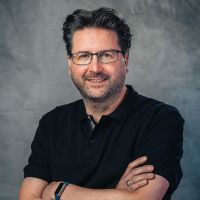
Alec De Grand
Alec De Grandと申します。私は、オリンパスでバーチャルスライドスキャンおよび正立顕微鏡のプロダクトマネージャーを任されております。オリンパスに10年以上勤務し、臨床製品、マーケティングイニシアチブ、イメージングコース、見本市などを運営してきました。

Bülent Peker
こんにちは。Bülent Pekerと申します。レーザー走査型検鏡法の専門家として任命されました。私が検鏡法と光工学に初めて興味を持ったのは、時間分解2光子検鏡法を扱っていた物理化学の博士課程の頃で、この情熱は今もずっと続いています。
オリンパスに13年以上勤務し、当社の最先端のレーザー走査型顕微鏡を市場に送り出すために、チームを手伝ってきました。特に、多光子システムのアプリケーションとレーザー走査システムのカスタム化の可能性に興味を駆り立てられています。

Chunsong Yan
こんにちは。Chunsong Yanと申します。Olympus Australia and New Zealandでライフサイエンスの事業開発部長をしております。現在、共焦点、多光子、ライトシート、スライドスキャンシステムを担当しております。2003年にオリンパスに入社して以来、様々な役割を担ってきましたが、常にお客様に最高のオリンパスのソリューションを提案できるよう努めております。

Daniel Bemmerl
Daniel Bemmerlと申します。3Dハイコンテント解析とオルガノイドのイメージングに関するあらゆる支援を提供しています。TIRF検鏡法とハイコンテントスクリーニングのアプリケーションスペシャリストとしてオリンパスに入社し、今は、3D解析ソフトウェアを専門としています。
私は分子および発生幹細胞生物学を学んでいましたが、そのうち、研究のより技術的な側面、特にイメージング対象の試料よりもイメージングそのものが面白いと感じるようになっていました。研究所以外の場所で、お客さまと開発とのインターフェイスとして働きたいと考え、オリンパスライフサイエンスに入社しました。3Dイメージングに関するあらゆる質問にお答えし、研究に集中してもらえるようにイメージングワークフローの向上のお手伝いができれば幸いです。

Dr. Nicolas Bourg
こんにちは。Nicolas Bourgと申します。Abbelightの最高技術責任者(CTO)と共同設立人であり、単一分子局在化法(SMLM、ナノ顕微鏡法としても知られ、PALM、dSTORM、SPT-PALM、DNA-PAINTのような技術が含まれる)に関する指名エキスパートです。
光電子工学エンジニアとして教育を受け、Paris-Saclay Universityでバイオフォトニクスの博士号を取得し、前例のない解像力を持った独特の3Dナノ顕微鏡法を研究しています。私の研究チームとともに、博士課程で得た知見を共有すべく、Abbelightを設立しました。これは、ナノ顕微鏡法をさらに強力なものにし、生物学者が高度な検鏡法の研修を受けなくても十分に活用できるようにすることを目標とする起業です。私の仕事は、ナノ顕微鏡法に関する皆さんの質問に答えることですので、いつでもご連絡ください。

Flavio Giacobone
こんにちは。Flavio Giacoboneと申します。Olympus Europaの市場でスライドスキャンソリューションを担当しています。イメージングは、生物医学工学における学位を取得した時から私にとってなくてはならないものになっています。オリンパス入社により、臨床および研究の多くの分野で起こっていたデジタルへのシフトを直に経験することができました。オリンパス初のスキャナー、dotSlideから始まるホールスライドイメージングで専門知識を築き上げたため、この最初の製品以降にどのくらいの進歩があったかを自分自身の目で見てきました。

Ganesh Kadasoor
Ganesh Kadasoorです。インドで過去15年間、オリンパスのハイエンドイメージングに関わってきました。インドのUniversity of Mysoreでライフサイエンスの学士号と修士号を取得し、昆虫医科学の博士号を取得しました。共焦点のスペシャリストとしてオリンパスに入社し、生細胞イメージングシステム、レーザー走査型共焦点、TIRF、スピニングディスク共焦点、超解像、多光子顕微鏡などのハイエンドイメージングシステムすべてを扱っています。現在は、バンガロールにあるOlympus Medical Systems India Ltdでナショナルマネージャー(アプリケーションサポート)として務め、国中の科学者、アカデミー会員、 販売店ネットワークに対するトレーニングプログラムの実施に関与しています。また、様々な検鏡法とイメージングのワークショップ、セミナー、ウェビナーの企画を担当し、国内外における検鏡法の教育過程をインドのチューター/トレーナーとしてサポートします。

Heiko Gäthje
こんにちは。Heiko Gäthjeと申します。広視野・共焦点蛍光検鏡法と3Dデータの画像処理における私の専門知識は、生物学者として仕事をしながら身につけてきました。その頃は、昆虫の神経発達と哺乳類の神経タンパクに結合するシアル酸の構造に着目していました。
2004年にオリンパスに入社し、2008年からオリンパスアカデミーで検鏡法のトレーナーとして勤務してきました。アカデミーでは、デジタルラーニングツールの構想と導入を担当しています。また、EMBL HeidelbergとZurich Winter Schoolで、高度な検鏡法に関するトレーニングコースを行っており、画像プロセスや画像解析に関連するたくさんの質問にお答えしています。

Irina Rakotoson
こんにちは。Irinaです。ライトシート検鏡法について皆さんとディスカッションするのを楽しみにしています。私は、Paris Descartes Universityで、加齢に特化した細胞生物学、 生理学、病理学の修士号を取得しました。プロダクトマネージャーとしてPhaseViewに入社する前は、ある神経科学研究所(SPPIN)で仕事をし、検鏡法コア施設のためのクリアリングプロトコルの最適化を行っていました。

Junsung Kim
こんにちは。Junsung Kimと申します。Olympus Koreaで共焦点顕微鏡のプロダクトスペシャリストとして勤務しています。Korea Universityでバイオエンジニアリングの修士号を取得しています。2014年にオリンパスに入社し、お客様へのオリンパスの共焦点・多光子顕微鏡のアプリケーションサポートを担当しております。

Kathy Lindsley
Kathy Lindsleyと申します。オリンパスでアプリケーションスペシャリストとして、カメラベースのイメージングシステムのサポートをしております。Iowa State Universityで生物化学の学士号を取得しています。2006年に、リサーチイメージングセールス担当としてオリンパスに入社し、2012年にlife science applications groupに異動しました。オリンパス入社前は、学術研究のリサーチアシスタントを15年間務め、パッチクランプ、カルシウムイメージング、組織培養、免疫組織化学の経験を積んでまいりました。

Lauren Alvarenga
こんにちは。Lauren Alvarengaです。オリンパスでリサーチイメージングのプロダクトマネージャーとして勤務しています。現在、イメージングソフトウェアおよび倒立型顕微鏡・超解像顕微鏡を担当しています。Rochester Institute of Technologyで生物医学フォトグラフィックコミュニケーションの理学士号を取得しました。
副甲状腺ホルモンによる腎リン酸輸送体Npt2aの転写後調節2015年からオリンパスに在籍し、米国、カナダ、中南米で、FLUOVIEW製品のサポートを担当しています。

Manoel Veiga
こんにちは。Manoel Veigaと申します。オリンパスのソフトウェアにディープラーニングを導入したチームに所属しています。2017年にオリンパスに入社し、ハイコンテントスクリーニング、画像解析、ディープラーニングの専門知識を身につけました。蛍光寿命イメージングのエキスパートでもあります。
私は、物理化学の博士課程で初めてデータ解析に興味を持ちました。畳み込みニューラルネットワークの分析力と信じられないような画像解析タスクに取り組める能力を知ってから、さらに興味が深まりました。

Minju Kim
Minju Kimと申します。Olympus Koreaで生物顕微鏡のプロダクトスペシャリストとして勤務しています。2010年にオリンパスに入社し、生細胞・蛍光イメージングシステムのハイエンドセールスとプロダクトスペシャリストとして勤務しています。また、韓国の販売店に対するトレーニングプログラムの担当者でもあります。

Rebecca Bonfig
こんにちは。Rebecca Bonfigと申します。オリンパスで共焦点検鏡法のプロダクトマネージャーをしています。University of Louisvilleの生理学・生物物理学部で副甲状腺ホルモンによる腎リン酸輸送体Npt2aの転写後調節について研究し、大学院を修了しました。2015年からオリンパスに在籍し、米国、カナダ、中南米で、FLUOVIEW製品のサポートを担当しています。

Shohei Imamura
今村尚平と申します。戦略製品のプロジェクトマネージャーをしています。ライフサイエンス向け顕微鏡のセールスで4年、ソフトウェアに的を絞った製品計画で7年の経験を積んでまいりました。また、戦略的プロジェクトのマネジメントと実行の仕事も行っています。日本の明治大学で商学士号を取得しています。

Srivats Hariharan
こんにちは。Srivats Hariharanと申します。Hariと呼ばれています。Olympus Singaporeで共焦点・多光子検鏡法と高解像検鏡法のプロダクトマネージャーをしています。シンガポールのNanyang Technological Universityで機械工学の学士号を取得し、生物医学研究室とA*STAR検鏡法コア施設に勤務した経験があります。そこでは、共焦点・生細胞イメージング技術について研究者をサポートし、単一分子超解像・ライトシート検鏡法のセットアップを支援しました。
2011年にOlympus Singaporeのライフサイエンスチームにプロダクトマネージャーとして加わり、東南アジアと台湾で、研究者であるお客様およびビジネスパートナーのサポートを担当しております。

Stefan Marawske
こんにちは。Stefan Marawskeと申します。超解像検鏡法のエキスパートです。物理化学分野での博士課程で、ローカライゼーションをもとにした超解像と微粒子追跡のための自家製顕微鏡を製作しました。これらの手法が、よく知られた回析限界を破り、それまで特定できなかった構造を解明することができるという事実に興味を駆り立てられました。
オリンパスに勤務して7年を超え、TIRFやスピニングディスクなどのハイエンドイメージングシステムを主に担当してきました。これらのシステムは通常、多くの異なる機器が様々なアプリケーションに合うように組み合わせが可能なのと同じように、高いレベルのフレキシビリティを持っています。専用の組み合わせを決める際にお手伝いが必要でしたら、ぜひご連絡ください。

Takeo Ogama
小蒲健夫と申します。オリンパスのシニアプロダクト・戦略プランナーであり、顕微鏡カメラのプロダクトマネージャーでもあります。カメラを含む様々な製品の研究開発部門で8年、製品計画、マーケティング、マネジメントで8年の経験を積んでまいりました。オリンパスに入社する前に、日本の大阪大学でニュートリノ物理学の修士号を取得しました。

Wei Juan Wong
こんにちは。Wei Juan Wongと申します。臨床・研究用製品のプロダクトスペシャリストです。 物理学の学位を取得しており、生物物理学研究室と検鏡法コア施設に勤務した経験があります。2018年にOlympus Singaporeのライフサイエンスチームにプロダクトスペシャリストとして加わり、東南アジア地域で、お客様にアプリケーションサポートを提供するとともに、販売店向けのトレーニングプログラムを担当しております。

Klaus Willeke
Hello, I’m Klaus Willeke, Product Marketing Manager at Olympus Life Science Division and I’m responsible for our new X Line objectives. During my geology studies, the polarization microscope was an essential tool for determining and researching mineral compositions and structures. I was always fascinated by how colorful the world of minerals appears through a polarization microscope and how much you can discover with the help of light and good optics.
I’ve been working for Olympus for more than 22 years where I was 17 years a sales representative for industrial and life science microcopy in Germany and after that in European Product Marketing in the Scientific Solutions Division of Olympus, responsible for upright clinical and research microscopes and X Line lenses.

Dr. Hrishikesh Pai
Dr Hrishikesh Pai did his Fellowship in Reproductive Biology from the Royal Women’s Hospital, Melbourne Australia in 1989. He did his Masters in Clinical Embryology and Andrology from the Jones Institute, Eastern Virginia Medical School, USA in 2006. He has won 45 plus awards including the Honorary FRCOG from the Royal College of Obstetricians & Gynecologists, United Kingdom in 2019. Dr Pai has been the Past President of the Indian Society for Assisted Reproduction (ISAR) and is the present Director of Corporate Affairs for International Federation of Fertility Societies (IFFS). Dr Pai is the President Elect of the Federation of Obstetric and Gynecological Societies of India (FOGSI) with a membership strength of 37,000 members. It is the second largest medical body of gynecologists in the world, only second to the ACOG.
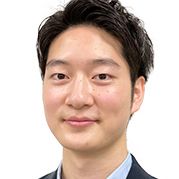
Hiroya Ishihara
Mr. Hiroya Ishihara is an Application Scientist at Olympus. He was studying the epigenetic factors involved in plant regeneration using omics and microscopy in Tokyo University of Science. Confocal and two-photon microscopy were his trusted partner at that time. Therefore, he joined Olympus to make life science more exciting with microscopes. Currently, he is working on a wide range of projects from basic research to product/sales strategy.

Dr. Gowri Balachander
Dr. Gowri Balachander is a Research Fellow at the Yong Loo Lin School of Medicine, National University of Singapore. She completed her PhD at the prestigious Indian Institute of Science, Bangalore, India where she worked on engineering 3D organotypic models for the study of breast cancer metastasis. At NUS, she currently works on morphogenetic models for human liver development and regeneration.
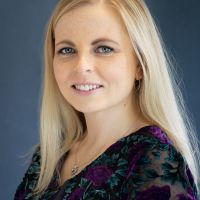
Joanna Hawryluk
Joanna Hawryluk is a product manager for Olympus Corporation of the Americas located in Waltham, MA. She has been with Olympus since 2017 within the Marketing department specializing in our 3D cell analysis software, lightsheet microscopy, electrophysiology, and our cell culture monitoring system. Dr. Hawryluk received her doctorate degree in Physiology and Neurobiology in 2016 from the University of Connecticut.
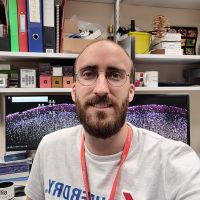
Benjamin Compans, Ph.D.
Benjamin received his Ph.D. from the University of Bordeaux. During his Ph.D., in the group of Dr. Choquet at the Interdisciplinary Institute for Neuroscience, he studied the nanoscale organization of glutamate receptors at excitatory synapse and its importance for synaptic plasticity. In 2018, he joined the lab of Professor Burrone at King’s College London for his postdoc where he investigates the molecular organization of inhibitory synapses and its role in regulating neuronal firing, a project for which he obtained a Marie Sklodowska-Curie Action postdoctoral fellowship.

Lin Guo
Lin got his PhD back in 2010 in National University of Singapore working on biophysical research. From 2009 he joined Olympus as Technical and Application specialist taking care of laser based high end imaging system. In 2012, Lin decided to move back to China and taking a position with one of the leading scientific camera manufacturers Photometrics. There, he started as application specialist, later become regional sales manager and finally scientific sales manager for Asia Pacific. In 2021, Lin moved back to Singapore, joining Olympus Singapore as the manager for product and application. Lin has a long experience of various techniques on scientific digital imaging including various camera technologies.

Angela Vasaturo
Hello, my name is Angela Vasaturo, the senior field application scientist at Ultivue. My passion for micro-biology and live-cell imaging began during my post-doc, where I was involved in the early development of multiplex IHC in Europe.
I built my expertise through extensive involvement in post-doc research focused on tumor immunology at the NCMLS in Nijmegen, NL, as well as during my position as Senior Researcher in Dr. Jerome Galon’s Laboratory of Integrative Cancer Immunology at the Cordeliers Research Center.
.png?rev=14CE)
Shogo Usui
My name is Shogo Usui and I'm product leader of CM20 at Olympus Corporation.
For over ten years, I have been an electrical engineer in the life science R&D team in Olympus Tokyo. I hold a Master’s degree in applied physics from the University of Electrical and Communication from Tokyo, Japan.
.jpg?rev=12D2)
Dr. Anne Beghin
Dr. Anne Beghin is a multidisciplinary scientist with fifteen years of extensive research experience across academia and industry. She obtained her PhD in oncology in 2007 at the University Claude Bernard in Lyon (France). She then moved to optical microscopy at the Université de Lyon, where she established the microscopy platform and developed live cell imaging solutions and image analysis services for 4 years.
In 2011, she was recruited by a biotechnology company based in Bordeaux, where she spent 3 years in charge of a tissue analysis service: from biologic samples (whole tissue sections and Tissue Micro Arrays) to image acquisition and analysis with database establishment. She has been part of the Interdisciplinary Institute of NeuroScience IINS for 3 years where she successfully developed a new platform linking the High Content Screening (HCS) approach with super resolution microscopy such as Single Molecule Light Microscopy (HCS-SMLM), a collaboration with pharmaceutical company, Sanofi. Subsequently, she moved to the MechanoBiology Institute (MBI) in Singapore to study organoids using advanced imaging and HCS. This work has resulted in a patent and publications are on-going.
.jpg?rev=339E)
Dr. Xiaotong Cui
Dr. Xiaotong Cui received his B.S. and M.Sc. from the University of Leicester, UK. He went on to receive aPh.D. from the Institute of Life Science, Kyoto University in 2018, where he worked under the direction of Prof. Osamu Takeuchi. From 2018-2020, he was a program-specific researcher in Shenzhen Digital Life Institute and ASHBi, Japan. Dr. Xiaotong has a solid background in molecular cell biology, immunology and he participated in one special program for Key Basic Research of Ministry of Science and Technology, China. Now, he serves as a Field Application Specialist in Bio-Techne China.
.jpg?rev=2687)
Dr. Kasmira Wilson
Dr. Kasmira Wilson is a general surgeon and CSSANZ trainee, having previously completed a BSc(Hons) and MBBS. She is currently undertaking a PhD through the University of Melbourne at Peter MacCallum cancer centre which focuses on translational research in rectal cancer. Her research utilises tumouroid models to explore anti-tumour immunity in rectal cancer in a novel functional cytotoxic assay.
.jpg?rev=74B7)
Dr. Dan Zhu
Dr. Dan Zhu is a professor of Huazhong University of Science & Technology, and Vice-Director of Wuhan National Laboratory for Optoelectronics. Her research interests mainly focus on tissue optical clearing imaging and applications. She is the pioneer in the field of in vivo tissue optical clearing, and also developed fast, label-compatible in vitro optical clearing methods. She has authored more than 150 papers including Science Advances, Nature Communications, et al. She is also Fellow of SPIE, and Secretary General & Vice President of Biomedical Photonics Committee of Chinese Optical Society. She serves for journals as editorial member or guest editor, including Biomedical Optics Express, Journal of Biomedical Optics, Scientific Reports, Journal of Innovative Optical Health Sciences, Frontier of Optoelectronics et al.
.jpg?rev=2811)
Dr. Graham Wright
Dr. Graham Wright holds an interdisciplinary PhD in cell biology and physics from The University of Edinburgh and an MBA from the Warwick Business School at The University of Warwick. He is the Acting Director of A*STAR’s Research Support Centre (RSC) and the Director of the A*STAR Microscopy Platform (AMP). RSC offers everything from on-demand access to sophisticated scientific instruments and services, located within varied Technology Platforms, to a research consumables webstore, playing a crucial role in powering biomedical innovation in Singapore.
Dr. Graham has extensive experience, and a strong publication record, in applying advanced light microscopy to a wide range of biomedical research projects. Outside the laboratory, he is committed to science outreach and has featured as a judge on MediaCorp’s National Science Challenge TV show, presented a TEDx talk, had microscopy images displayed on the big screen in Times Square, New York and exhibited work at the National Museum of Singapore.
.jpg?rev=73D5)
Mr. Srivats Hariharan
Mr. Srivats Hariharan is an Applications & Marketing Manager in Olympus life science team in the Asia Pacific region. He holds a bachelor’s degree in Mechanical Engineering from Nanyang Technological University, Singapore and has experience working in biomedical research labs and A*STAR Microscopy Core Facility where he supported researchers on confocal and live cell imaging technologies and help setup single molecule super-resolution and light sheet microscopes. He joined the life-science team of Olympus Singapore in 2011 as Product Manager and in-charge of supporting research customers and business partners in South-East Asia and Taiwan.
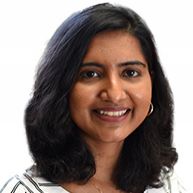
Ms. Gency Gunasingh
Ms. Gency Gunasingh completed her Master of biotechnology degree from University of Queensland in 2012 and did her Masters project under Dr. Andrew Prowse and Prof. Peter Gray at Australian Institute for Bioengineering and Nanotechnology. Her primary area of research was large scale generation of cardiac progenitors from embryonic stem cells in 3D. She then worked under Prof. Brian Gabrielli at UQ Diamantina institute on developing 3D tumour spheres in melanoma for in vitro drug testing. She currently works for Prof. Nikolas Haass at UQDI on understanding tumour heterogeneity and tumour architecture in melanoma spheroids.
.jpg?rev=2087)
Dr. Dong Gao
Dr. Dong Gao is the Principal Investigator of Shanghai Institute of Biochemistry and Cell Biology, Chinese Academy of Sciences. His research interests mainly focus on t prostate adult stem cell and the establishment of patients-derived cancer organoid biobank. He has authored more than 40 papers including Cell, Nature Genetics, Cell Stem Cell et al.
.jpg?rev=1436)
Dr. Yu Weimiao
Dr. Yu Weimiao obtained his Ph.D. from the National University of Singapore (NUS) in 2007, majoring in image processing and machine vision. He joined the Agency of Science, Technology and Research (A*STAR) in 2007. He is currently heading Computational Digital Pathology Lab (CMPL) in BII to deepen and extend the R&D with clinical and industrial partners. He is also the joint PI in IMCB leading the Computational & Molecular Pathology Lab (CMPL). His research interests are Computational Biomedical Image Analysis and Quantitative Imaging Informatics. He applied 3D image analysis solution to segment and tracking the cells in 3D to understand the developmental problem and collective cell migration mechanisms. His work was published in Nature Communication, Current biology, Nature Cell Biology, etc. To enhance the applications in clinical diagnosis/prognosis, he co-founded a biotech company, known as A!maginostic Pte. Ltd. He established a world-class joint platform for the immunodiagnosis at the tissue level. The platform allows the researchers, clinicians, and pharma to profile the patient immune signature for diagnosis, prognosis, and drug response study.
.jpg?rev=9A5C)
Dr. Motoki Takagi
Dr. Motoki Takagi received PhD from Graduate School of Agriculture and Life Sciences, the University of Tokyo in 2001. Then he continued his research as a postdoctoral fellow at Institute of Molecular and Cellular Biosciences, the University of Tokyo. He was engaged in the research of nucleic acid drugs at Genencare Research Institute, Co. Ltd. since 2002. Since 2006, he conducted drug discovery research at Biological Systems Control Team, Biomedicinal Information Research Center, Japan Biological Informatics Consortium. Since 2012, he has been researching chemical biology as an associate professor at Fukushima Medical University and became a professor in 2014.
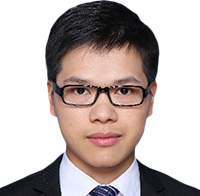
Dr. Ningbo Wu
Dr. Ningbo Wu is an Associate Professor at Shanghai Institute of immunology, Shanghai Jiaotong University School of Medicine. His research interests mainly focus on the function of intestinal stromal cells in intestinal homeostasis and related work was published in Nature and Science CHINA Life Sciences, et al.

Dr. Nuno Costa-Borges
Nuno Costa-Borges is devoted to offering quality control (QC) tests, training, and consulting services to the IVF community worldwide. With over 18 years’ experience, Nuno completed a PhD focused on improving animal cloning efficiency before joining IVI Barcelona as a clinical embryologist. Now, as cofounder and scientific director of Embryotools, Nuno is committed to developing new IVF techniques, which have led to the world’s first babies via maternal spindle transfer for infertility and to the development of the first robotic system for intracytoplasmic sperm injection successfully tested clinically.

Akira Saito
Akira studied veterinary medicine at Tokyo University of Agriculture and Technology, Japan and graduated in 2007. Shortly after, he joined Olympus as application specialist responsible for in vivo imaging systems, high-content analysis systems, and laser confocal systems to support customers in Japan. In 2013, he took over sales promotion for all Olympus life science products. From 2018, he moved to Singapore and joined to support the marketing and application support for the APAC market.
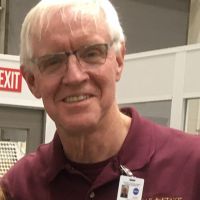
Bob McLean
Bob McLean has over 30 years’ experience as a microbiologist, during which time he and his lab have done a number of studies on surface-adherent microorganisms (biofilms). In 1998, he and his colleagues had an experiment on the space shuttle with John Glenn, in which they were one of the first research groups to show that biofilms could form in microgravity. Since that discovery, there have been a number of biofilm issues, notably instances of fouling in the water recovery system in the International Space Station and other spacecraft. In 2015, Bob, along with collaborators at Arizona State and the Johnson Space Center, received a NASA grant to study biofilm formation during spaceflight. Confocal and other types of microscopy have been instrumental in these investigations.
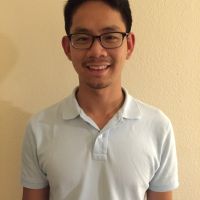
Jesse Chao
Jesse completed his Ph.D. at the University of British Columbia (UBC) in cell biology and genomics. He then continued his training at the University of California, San Diego. After, he switched his focus to developing machine learning approaches for assessing the physiological impacts of genetic variants associated with hereditary cancer at UBC. During this time, he started to develop deep learning approaches to automated phenotypic profiling based on high-content imaging data.

James Lopez
James Lopez received his Ph.D. in biomedical sciences from the University of Chicago in 2010. With nearly a decade of experience in calcium imaging, FRET, live cell imaging, and intravital imaging, James joined Olympus as a confocal and multiphoton sales representative. He later transitioned to the Olympus Life Science Applications Group, supporting confocal and multiphoton systems. Now he manages the Life Science Applications Group in the US, Canada, and Latin America markets.

Yosuke Yoneyama
Yosuke Yoneyama obtained his Ph.D. from The University of Tokyo in Japan, where he continued his post-doctoral work on insulin/insulin-like growth factor signaling with a focus on spatiotemporal control of the intracellular signaling system in the laboratory of Dr. Shin-Ichiro Takahashi. He then joined the laboratory of Dr. Takanori Takebe at Tokyo Medical and Dental University in Japan as an assistant professor. He now focuses on human organoids, in particular liver organoids, that are derived from stem cells, including induced pluripotent stem cells (iPSCs), to reconstitute multiple lineages of liver cells both for human development and modeling diseases such as non-alcoholic steatohepatitis.
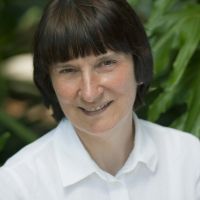
Ewa Goldys
Professor Ewa M. Goldys is Deputy Director of the Australian Research Council Centre of Excellence in Nanoscale Biophotonics (cnbp.org.au) and Professor at the Graduate School of Biomedical Engineering, the University of New South Wales, Sydney, Australia. She is Fellow of SPIE, OSA, the Australian Academy of Technological Science and Engineering (ATSE), and winner of the 2016 Australian Museum Eureka Prize for ‘Innovative Use of Technology.’ She has ongoing involvement with SPIE BIOS, the world's largest international biomedical optics meeting and SPIE's Photonics West where she serves as Track Chair in Nanobiophotonics.
Her research spans the areas of biomedical science, bioimaging, biosensing, and materials science. She developed novel approaches to biochemical and medical sensing and deployable medical diagnostics. Current projects focus on cancer nanotechnology and non-invasive high-content imaging of colors and patterns in cells and tissues.
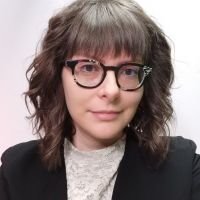
Laura Vittadello
Dr. Laura Vittadello is working as a post-doc in the physics department of the Osnabrück University in the ultrafast physics research group. Her research focus is on the fundamental study and application of a new type of marker, harmonic nanoparticles, that are specially designed for biological applications that involve nonlinear microscopy.
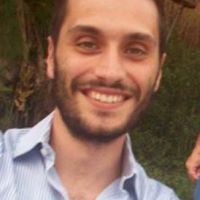
Francesco Cardarelli
After receiving his M.Sc. in Biological Sciences from the University of Pisa in Oct 2003 and his Diploma in Biological Sciences in the same year (both with honors) from SNS, Francesco Cardarelli worked at the NEST Laboratory of SNS as a Ph.D. student in Molecular Biophysics under the supervision of Prof. Fabio Beltram. He started his interdisciplinary research at the crossroads between cell biology and physics, using advanced fluorescence microscopy methods to study the intracellular transport properties of virus-derived peptide sequences. After graduating, he became a Post-Doctoral Fellow at the Laboratory for Fluorescence Dynamics, University of California at Irvine, under the supervision of Prof. Enrico Gratton, where he coordinated the research activity for the development of new spatial variants of fluorescence correlation spectroscopy to detect barriers to molecular diffusion/flow in live cells. In Dec 2010 he was hired by the CNI@NEST (IIT) as a Post-Doctoral Fellow. Back in Italy, he started working to develop new fluorescence-based imaging and analysis methods to study single molecules in complex biological systems with high spatiotemporal resolution. This research was boosted by a number of funded grants (and established collaborations) and by an independent scientific position, first at CNR as a Researcher, then at SNS as Professor in Applied Physics.
The focus of his research is on the development of new optical microscopy techniques to increase the amount of quantitative information that can be extracted from investigations on living matter. For instance, in recent years, he and his team introduced a number of new spatiotemporal fluctuation-analysis tools (iMSD, iRICS, nD-pCF, diffusion tensor analysis, etc.) to extract structural and dynamic properties of biological objects, from molecules to entire sub-cellular structures, in their complex natural environment. Such a toolbox is becoming a new paradigm for biophysical investigations at the nanoscale, as featured in the “New and Notable” section of Biophysical Journal (2016 Aug 23; 111(4): 677–678). In 2014, together with his Team, they demonstrated the occurrence of short-range protein Brownian motion in the cell cytoplasm, being among the first to challenge the current view of the structural organization of the crowded intracellular environment. Finally, by combining this toolbox with feedback-based orbital tracking, they demonstrated that even the nanoscopic and dynamic environment of intracellular organelles can be quantitatively probed.

Sandrine Roy
Dr. Roy completed a double-major in Biochemistry and Microbiology followed by the completion of a Doctor of Philosophy in 2002 in the field of Molecular Biology/Cell Biology at the University of Queensland Australia. She travelled abroad to undertake a post-doctoral position at Washington University in St Louis, USA. She then returned to Australia to continue her post-doctoral studies.
With her extensive microscopy experience, she was appointed as the University of Queensland Diamantina Institute Microscopy Facility Manager in 2009 and later as manager of microscopy services at the Translational Research Institute in Brisbane until 2019.
She is now Business Development Manager at Olympus Australia, where her experience and knowledge is used to support customers both in Australia and New Zealand.
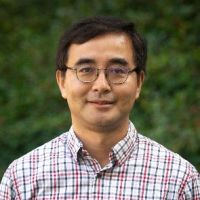
Seungil Kim
Seungil Kim, Ph.D., is a Staff Scientist and Microscopy Team Manager at the Lawrence J. Ellison Institute for Transformative Medicine at USC. Dr. Kim completed his B.S. and M.S. degrees in South Korea. He then moved to Washington University and received a doctoral degree in Developmental Biology. He carried out his postdoctoral research in the department of Cell and Tissue Biology at UCSF. Seungil has over 10 years of experience working with various in vitro/in vivo models and advanced cellular imaging techniques. His current research focus is to understand the contributions of the tumor microenvironment to drug response, using patient-derived 3D organoids as a model system. Moreover, he is developing high-throughput automated imaging methods to screen novel drug compounds in colorectal cancer.
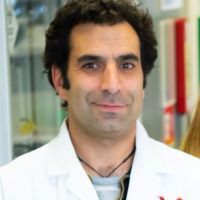
Alfonso J. Schmidt
Alfonso has a decade of experience working in a shared resource lab (SRL) with a vast knowledge in histology, fluorescent microscopy, and image analysis. His work has been focused in maximizing the capabilities of the equipment available and in creating technical protocols and training modules for the scientific community. Currently, Alfonso oversees the Histology and Bioimaging Facility as part of the Hugh Green Cytometry Centre (HGCC) at the Malaghan Institute of Medical Research in Wellington, New Zealand.

Tong Wu
Tong Wu joined Olympus in 2012 after completing her Ph.D. in China (State Key Laboratory of Fine Chemicals, DLUT). Now, Tong is a business development manager, supporting high-end microscopes in Olympus Australia. With a research background in fluorescent dyes for bio-imaging and bio-labelling, Tong Wu is enthusiastic to engage with customers’ research applications.
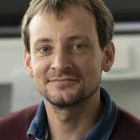
Ruben Portugues
Prof. Portugues is a neurobiologist studying sensorimotor control. His research group uses behavior, modeling, optogenetics, in vivo electrophysiology, and whole brain functional calcium imaging to dissect learning, memory, and action selection in the larval zebrafish.
Prof. Portugues studied mathematics and did his Ph.D. in theoretical physics at Trinity College in the University of Cambridge. After a short postdoctoral fellowship in physics at Centro de Estudios Cientificos in Valdivia, Chile, he joined Professor Florian Engert’s laboratory at Harvard University and switched research interests to neuroscience. In 2014 he was appointed Max Planck Research Group Leader at the Max Planck Institute of Neurobiology in Martinsried. Since 2020 Prof. Portugues is an assistant professor at the TUM.
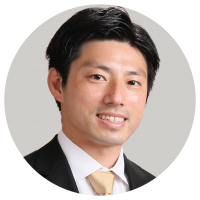
Atsuya Toda
Atsuya Toda is an assistant manager for Global Life Science Marketing at Evident. He has more than fifteen years’ experience in life science microscopy sales, sales planning, and marketing in Japan. In 2021, he moved to the Global Life Science Marketing team where he is the marketing representative for the APEXVIEW APX100 all-in-one microscope. He holds a Bachelor of Economics degree from Doshisha University, Japan.

Dr. Laura Lleras Forero
Laura Lleras Forero is the product marketing manager for cell culture products at Evident. She completed her PhD at King’s College London and undertook postdocs in Utrecht, Berlin, and Münster. She has been with Evident since 2021, supporting cell culture microscopy solutions, the SLIDEVIEW™ VS200 research slide scanner, and the APEXVIEW™ APX100 all-in-one microscope for Europe, the Middle East, and Africa (EMEA).
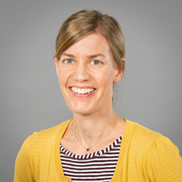
Ines Hartmann
Ines Hartmann is an application specialist for cell handling at the Eppendorf headquarters in Hamburg, Germany. She joined the company in 2008 and has worked on several topics in cell handling, liquid handling, and consumables. She obtained her diploma degree in biology at the Humboldt University of Berlin, Germany and has expertise in various laboratory techniques.
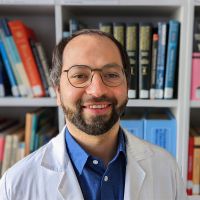
Amin El-Heliebi
Featured Speaker Amin El-Heliebi (Professor) Professor Amin El-Heliebi was educated in Graz, Stockholm and Buenos Aires and was appointed Research Professor 2021 at the Medical University of Graz, Austria. His research focus lies in molecular biomarkers, cancer research, liquid biopsy, tumor biology, and spatial transcriptomics. His overarching research question deals with understanding tumor dissemination. His research group investigates liquid biopsies, such as circulating tumor cells (CTCs) and circulating tumor DNA (ctDNA). Their overall aim is to track and trace liquid biopsies back to the originating tumor mass and identify the mechanisms involved in spreading of metastatic disease.
Ask the Experts
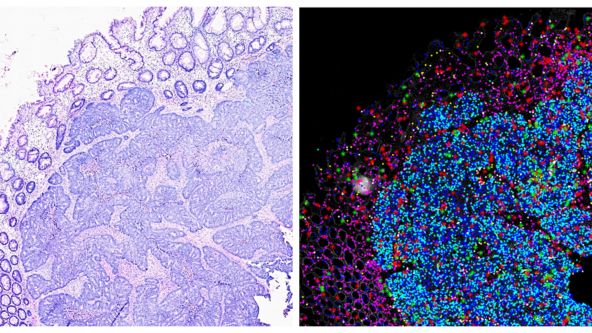
Investigating Tumor Dissemination by Spatial Transcriptomics
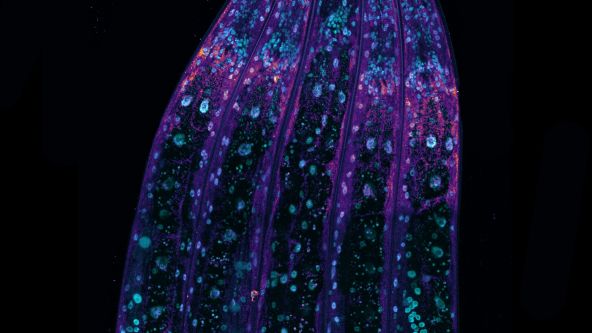
Transforming Precision Imaging: Meet the FLUOVIEW™ FV4000 Confocal Microscope
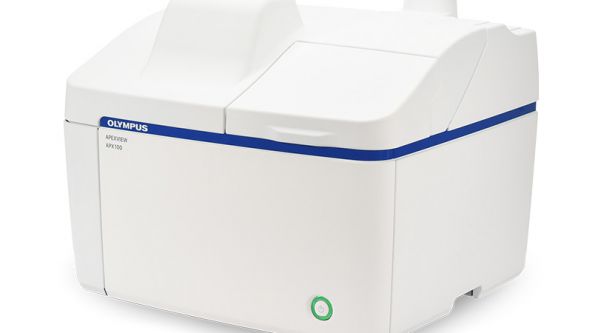
Introduction to the APEXVIEW™ APX100 Digital Imaging System
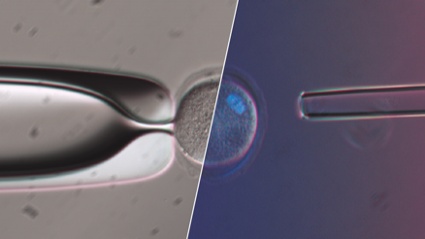
How Polarized Light Can Assist Embryologists in Clinical Routines
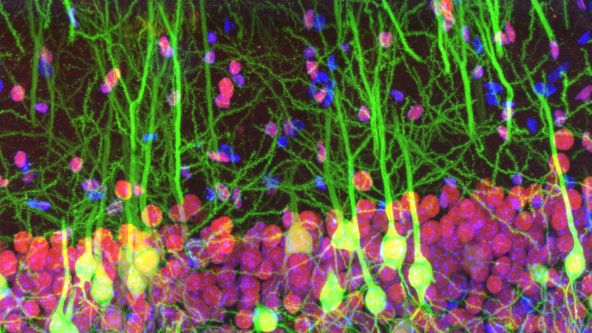
Unveiling Nanoscopic Realms: A Journey into Super-Resolution Microscopy
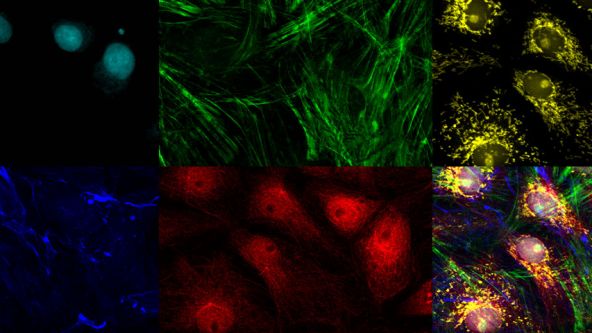
Multiplexing and Deep Tissue Imaging with NIR Confocal Laser Scanning Microscopy (Encore Edition)
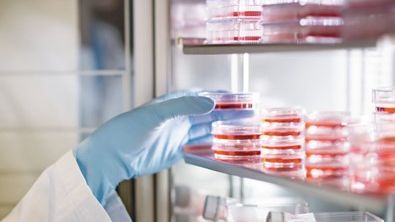
Good Cell Culture Practice—How to Improve the Reproducibility of Your Experiments
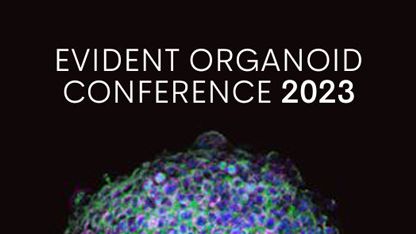
EVIDENT Organoid Conference 2023 - Looking Deeper, Capturing Complexities
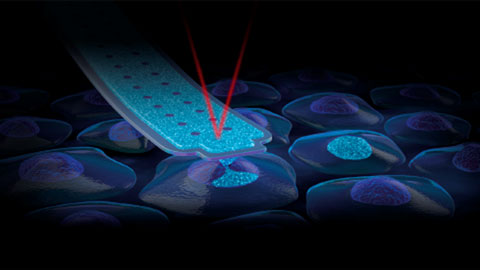
FluidFM:核内直接送達によるCRISPR遺伝子編集への新たな手法
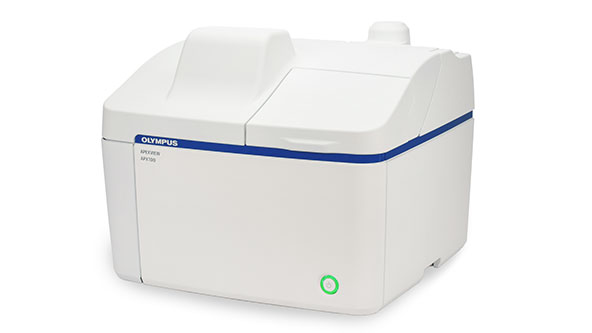
Exceptional Imaging Made Easy: Meet the APEXVIEW™ APX100 All-in-One Microscope
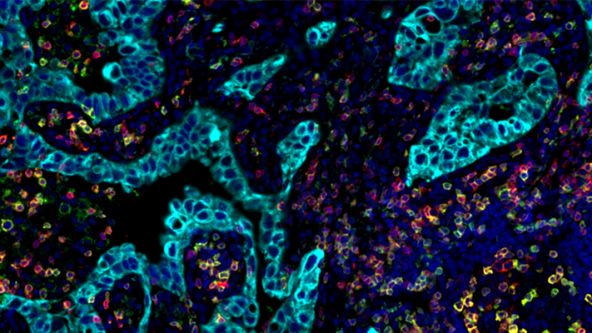
最新のスライドスキャン:固定サンプルにおけるシングルセル表現型解析
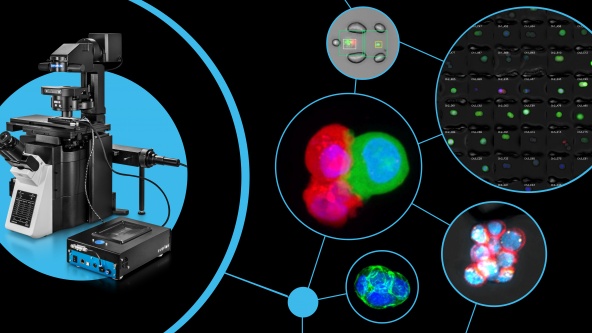
Technology Evaluation: Deciphering Cell-Cell Interactions in a 3D Microenvironment at a Single-Cell Resolution
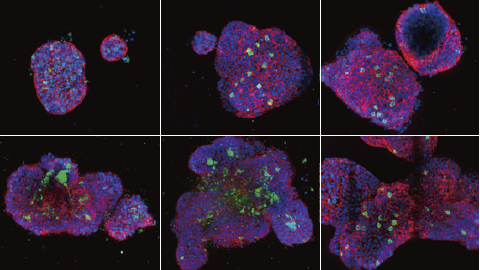
3Dアッセイ:高性能なソフトウェアで洞察力に優れた分析
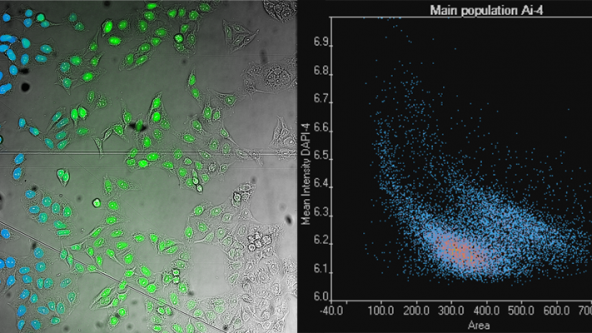
ディープラーニング:新たなアプリケーションへの扉を開く
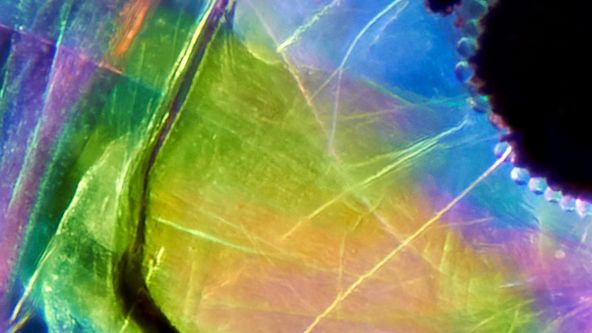
オリンパス・バイオイメージング・カンファレンス:新次元の探索 | 3日間のバーチャルイベント | 2022年3月9日~11日
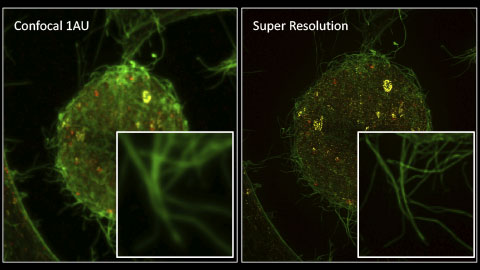
ライブセル超解像イメージング: 小さなものの全体像
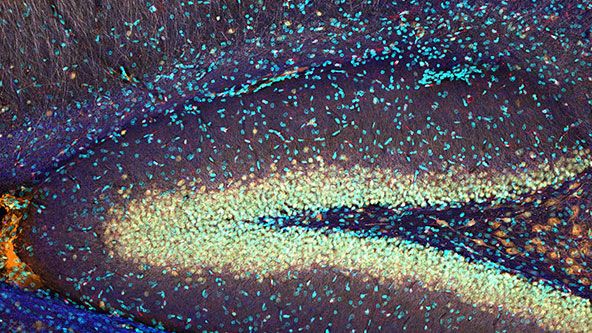
FV3000 Red Near-Infrared (NIR) Solutions for Confocal Microscopy | 2 p.m.

FV3000 Red Near-Infrared (NIR) Solutions for Confocal Microscopy | 10 a.m.
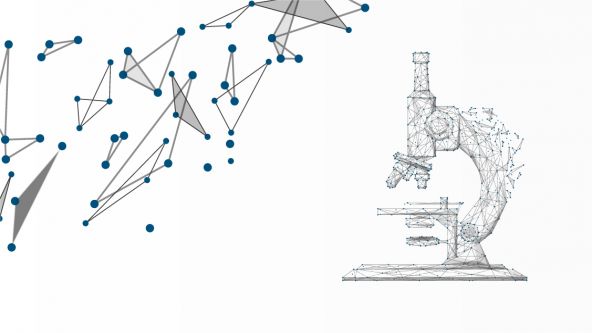
オリンパス・ディスカバリー・サミット:イメージング力を高めよう | 2021年10月26~27日
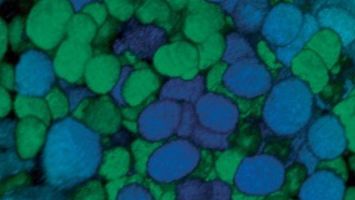
Olympus Organoid Conference 2021
.jpg?rev=3E0D)
顕微鏡対物レンズ:魔法が起こる場所
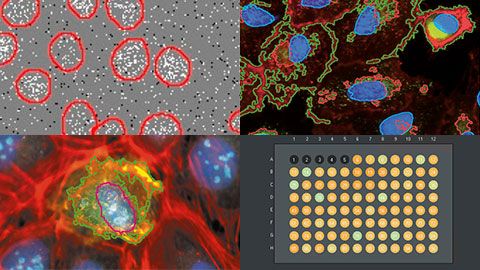
ハイコンテントスクリーニング:カスタム解析を簡単に
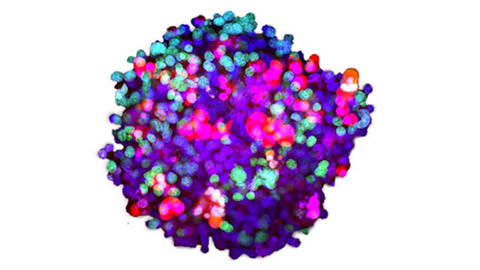
患者由来のオルガノイドとスフェロイドの三次元高スループット画像解析
.jpg?rev=1940)
デジタル画像処理パート2:先進の画像処理フィルター
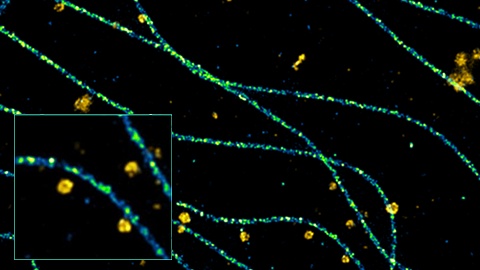
複数の細胞内構造体に対するナノスケールの3Dイメージング
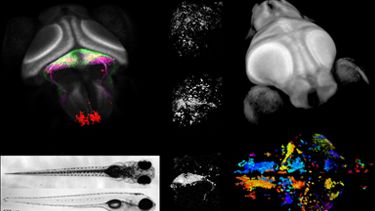
Whole-Brain Functional Calcium Imaging Using Light Sheet Microscopy
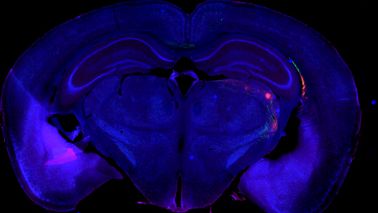
Product Demo: SLIDEVIEW™ VS200 Research Slide Scanner

Product Demo: SLIDEVIEW™ VS200 Research Slide Scanner

The Use of Multiplexing in Microscopy for Better Understanding the Skin Immune System in the Context of the Tissue

Recent Advances in 3D Imaging and AI-Driven Data Analysis

Now You Have the Power to See More

Metabolic Imaging in Langerhans Human Islets with MPE and FLIM

Product Demo: IXplore™ SpinSR Confocal Super Resolution System

In-Vivo Tracking of Harmonic Nanoparticles by Means of a TIGER Widefield Microscope

Hyperspectral and Brightfield Imaging Combined with Deep Learning Uncover Hidden Regularities of Colors and Patterns in Cells and Tissues

Product Demo: FLUOVIEW™ FV3000 Confocal Laser Scanning Microscope

Product Demo: FLUOVIEW™ FV3000 Confocal Laser Scanning Microscope

Evolution of Scientific Digital Imaging Technologies and their Applications

Deep Learning Approaches to Automated Phenotypic Profiling

Deconvolution of 3D Image Stacks

Confocal Microscopy and Its Use for a Spaceflight Experiment

Accelerating Image Analysis with TruAI™ Deep Learning Technology

A New Way of Thinking—Object Detection with Deep Learning
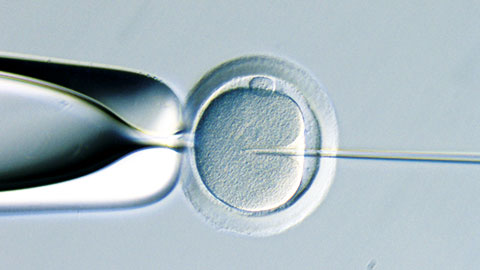
ICSI - How to improve your technique
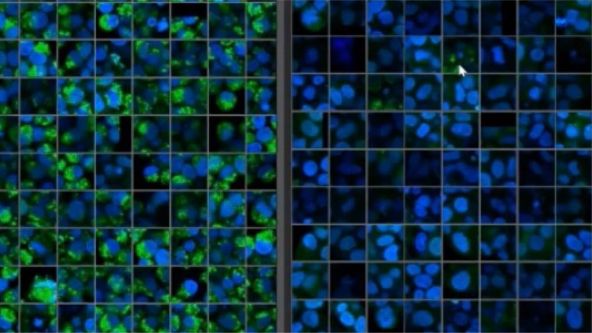
NoviSight™ Demonstration: 3D Image Analysis and Statistical Software for Organoids and Spheroids

Study the Function of Stromal Cells through Intestinal Organoid Co-Culture Technology

An In Vitro System for Evaluating Anticancer Drugs Using Patient-Derived Tumor Organoids
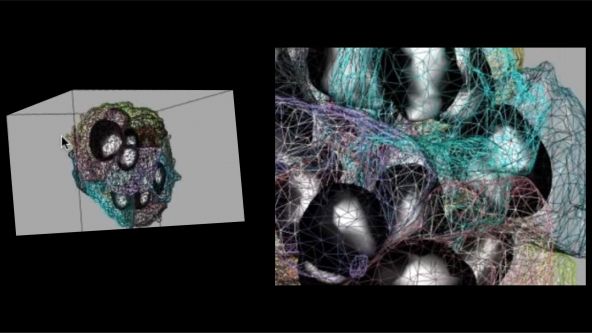
3D Segmentation for Fluorescence Images: From Qualitative to Quantitative

Prostate Cell Lineage Hierarchy and Plasticity

Investigating Spheroid Architecture Using the FV3000 Confocal Microscope

Advances in 3D Optical Imaging Technologies: An Overview

3D Microscopy: Understanding the Give and Take on Instrument Performance to Enable Informed Decisions
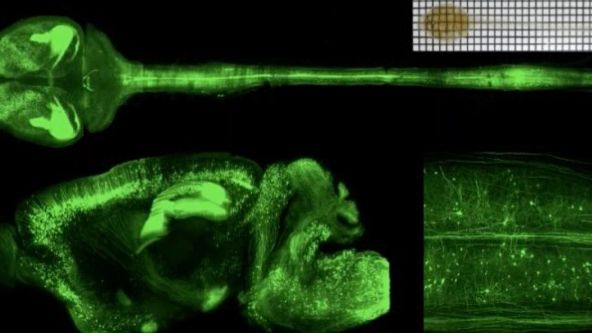
Tissue Optical Clearing Imaging: From In Vitro to In Vivo

Utilizing Tumoroids to Explore Anti-Tumor Immunity in Rectal Cancer

Converting from 2D to 3D: Bio-Techne Solutions for Your 3D Culture
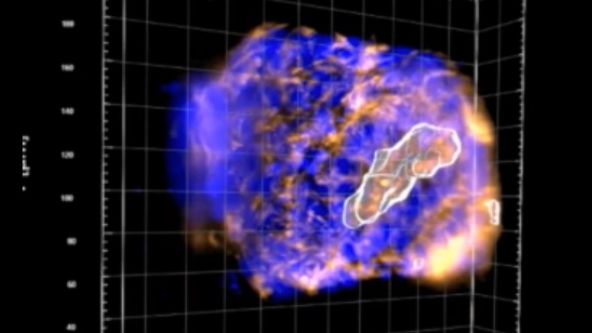
Culture and Quantitative 3D Imaging of Organoids: Challenges and Solutions
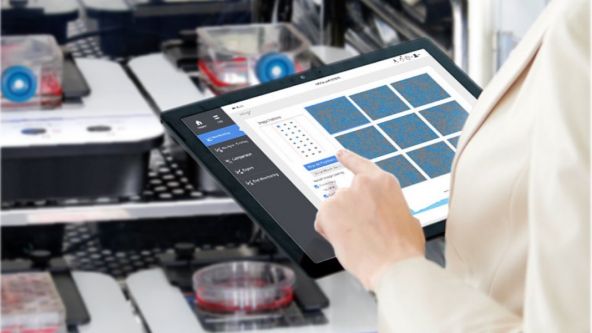
A Smarter Approach to Culturing and Nurturing Your Cells

Modern Slide Scanning: Single-cell Phenotyping on Fixed Samples (Encore Edition)
.jpg?rev=6A21)
To the Diffraction Limit and Beyond: The Nanoscale Organization of Axo-Axonic Synapses | 2 p.m.
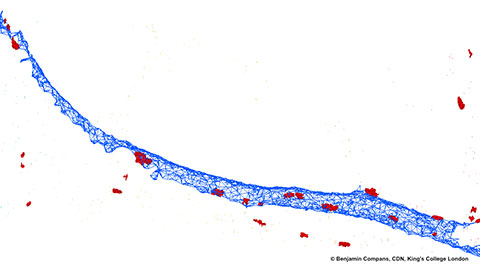
To the Diffraction Limit and Beyond: The Nanoscale Organization of Axo-Axonic Synapses | 10 a.m.
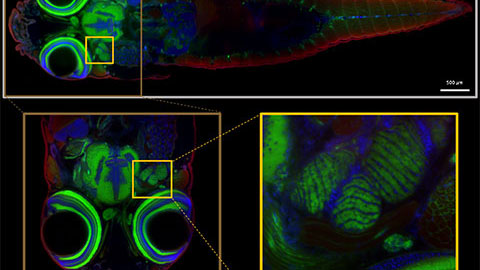
Light Sheet Microscopy – New multi-resolution and -color imaging methods
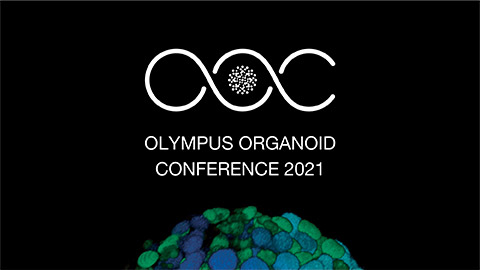
Olympus Organoid Conference: Think Deep, See Deeper | 3-Day Virtual Event | September 7-9, 2021

Create a Smarter Cell Culture Workflow

Digital Image Processing: Point and Local Operation Filters (Encore Edition)

Depth Matters: Transforming Biology for More Realistic and Meaningful Pursuits
.jpg?rev=FD74)
Microscope Objectives—Where the Magic Happens (Encore Edition)
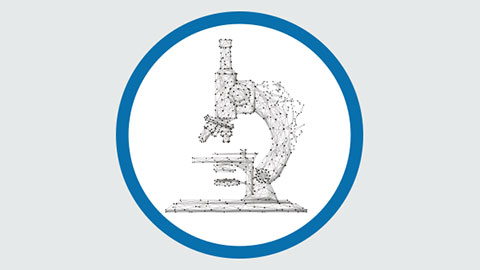
Olympus Discovery Summit—Looking Forward: A New Era of Research
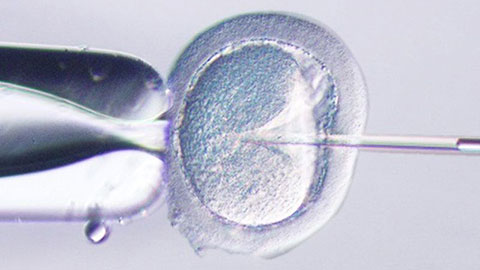
ICSI—Past, Present & Future
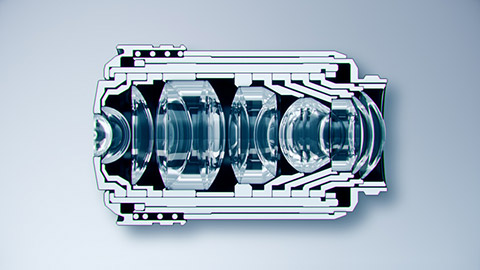
Microscope Objectives—Where the Magic Happens

Think Deep, See Deeper with Near-Infrared Laser Scanning Confocal Microscope
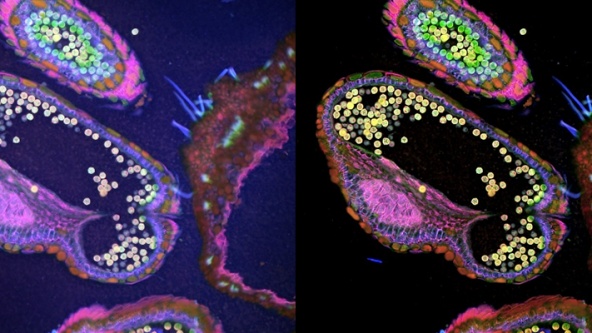
Digital Image Processing: Point and Local Operation Filters

Light Sheet Microscopy for Deeper Insight into Life

